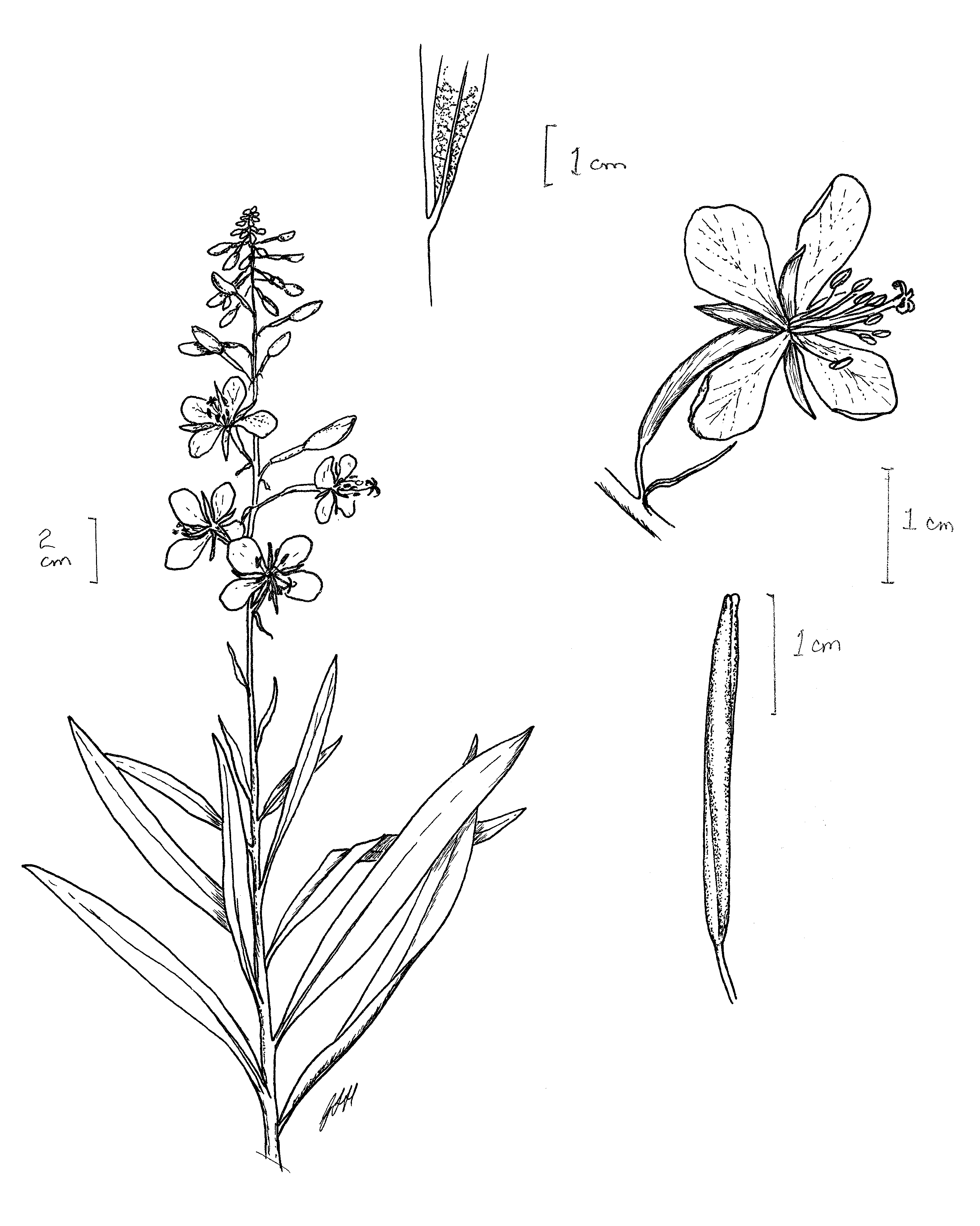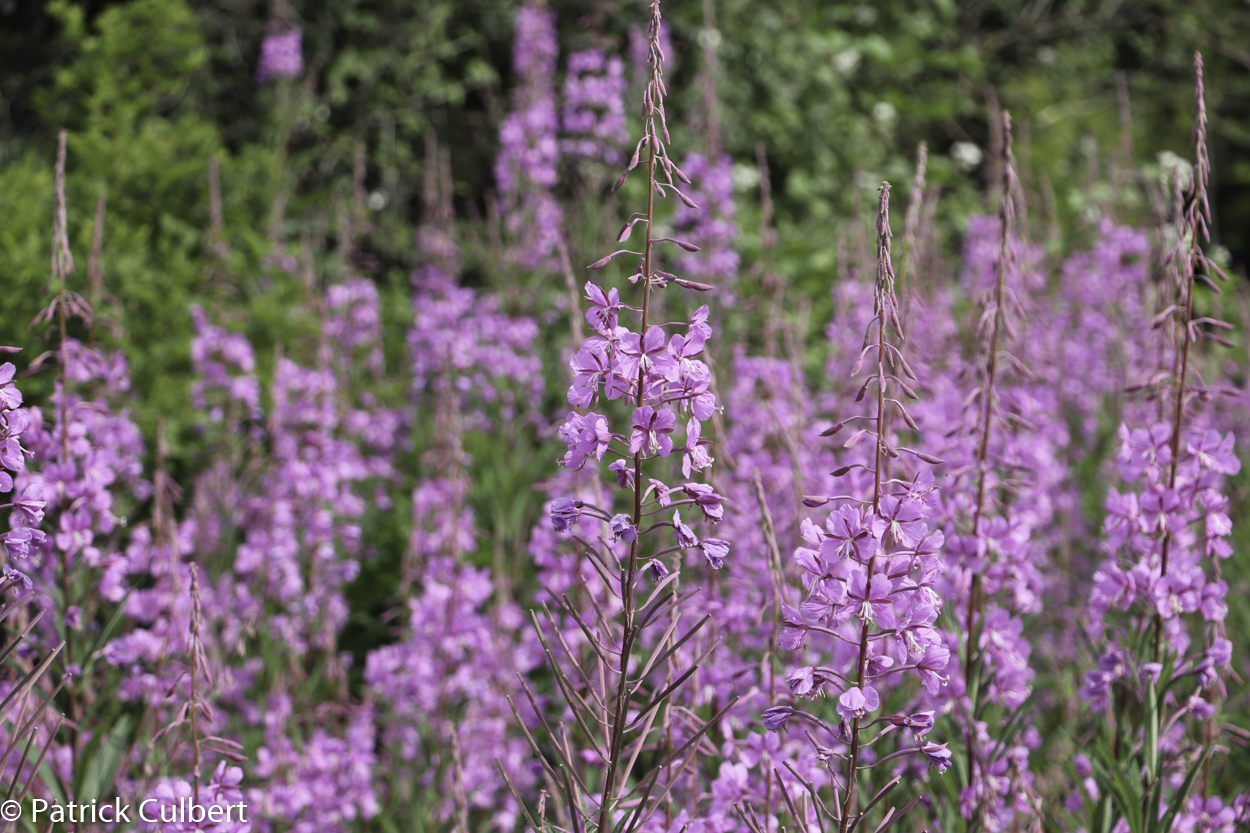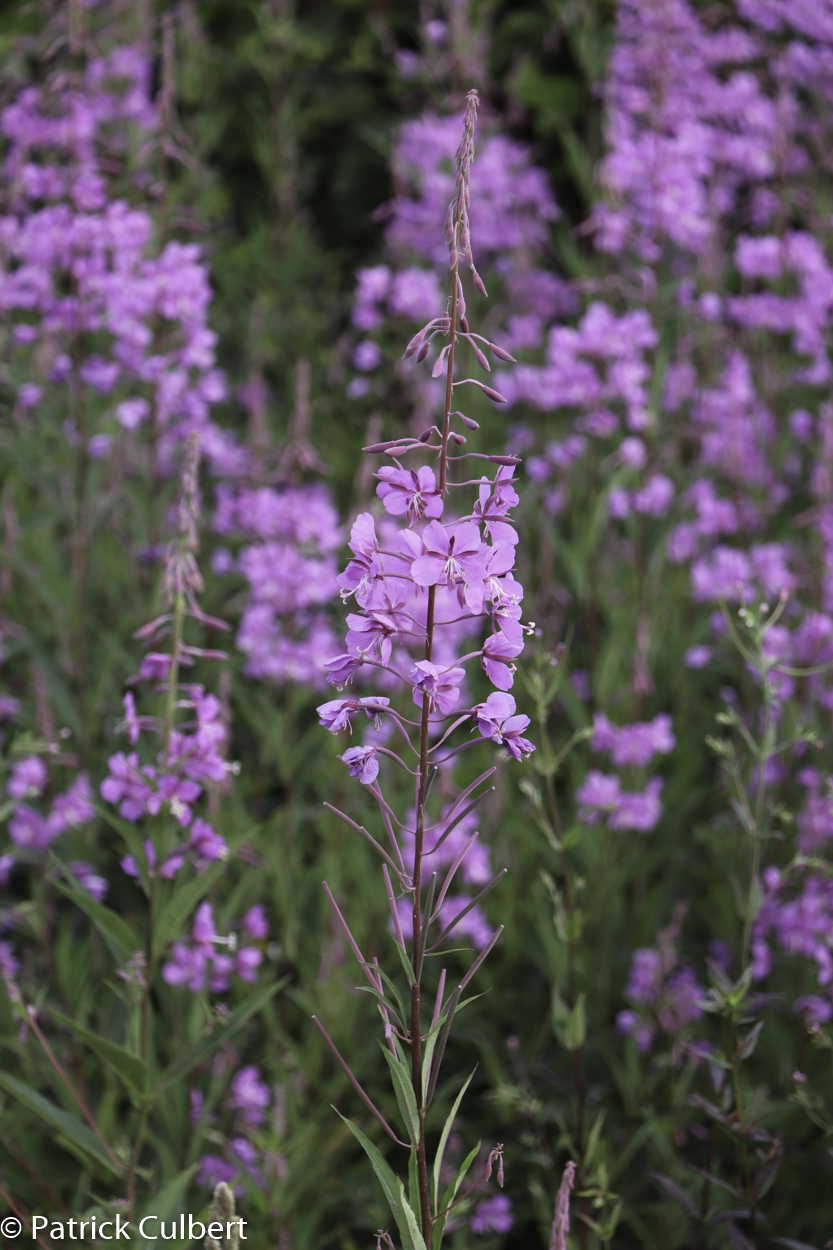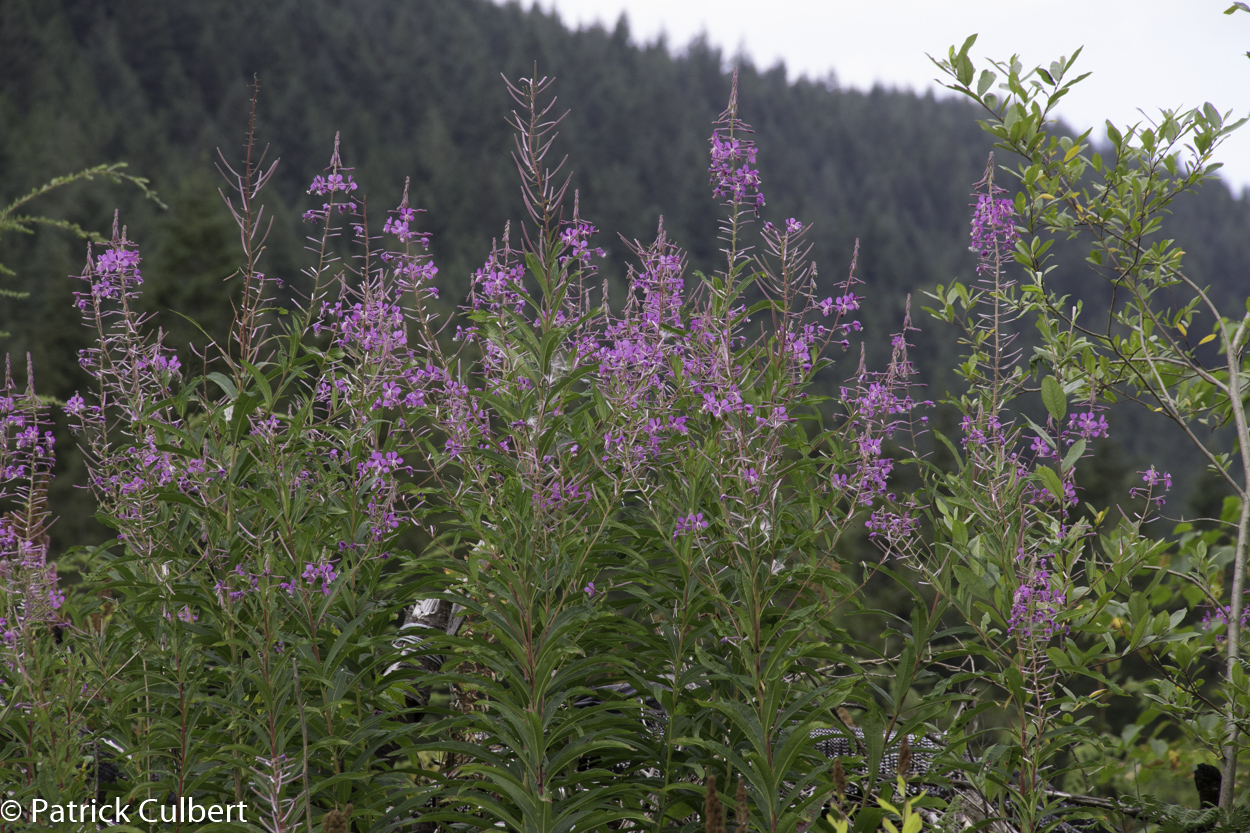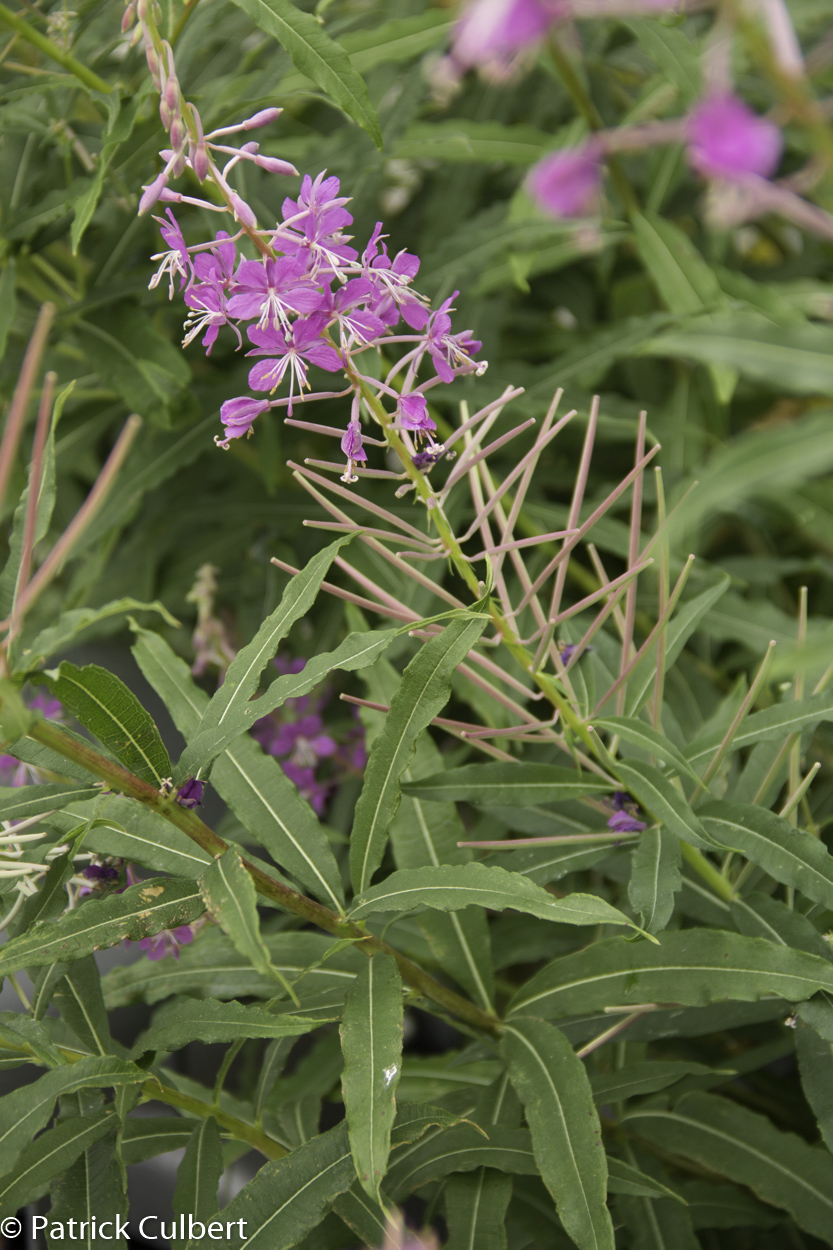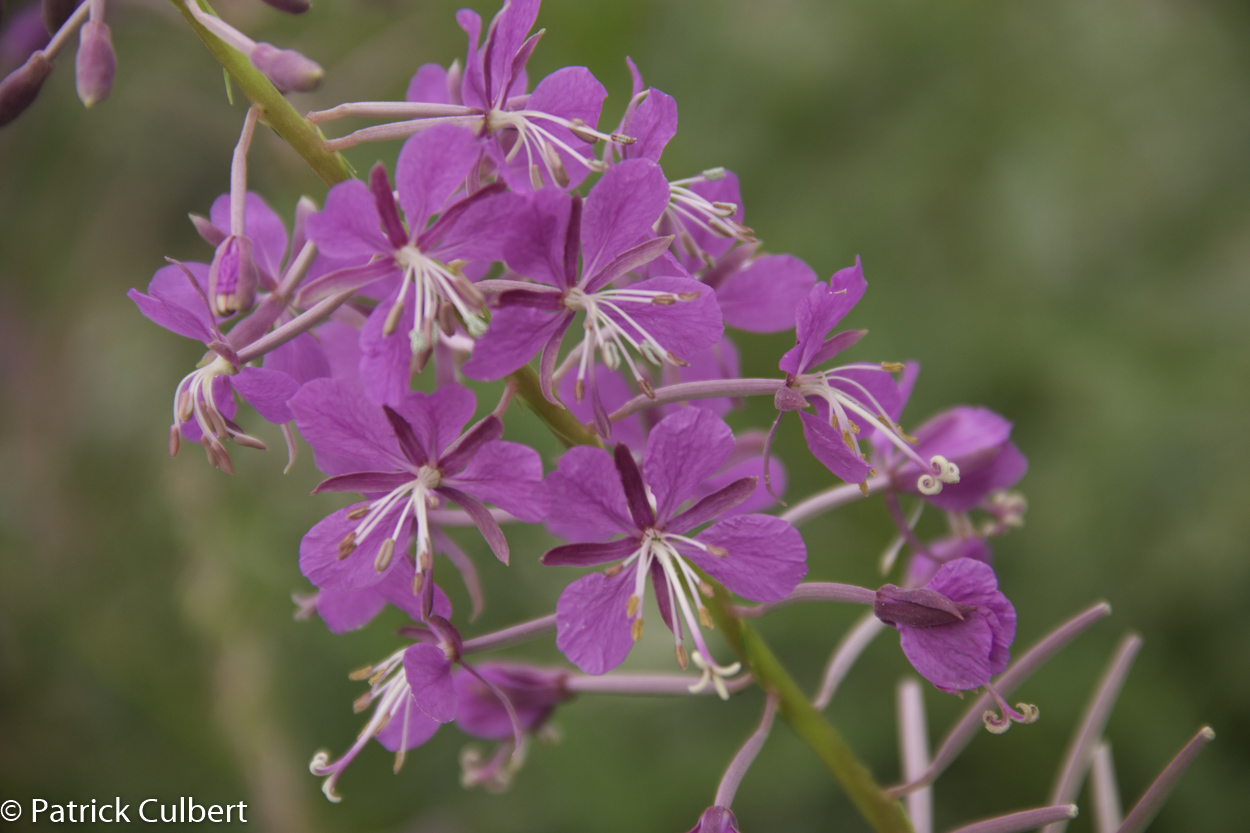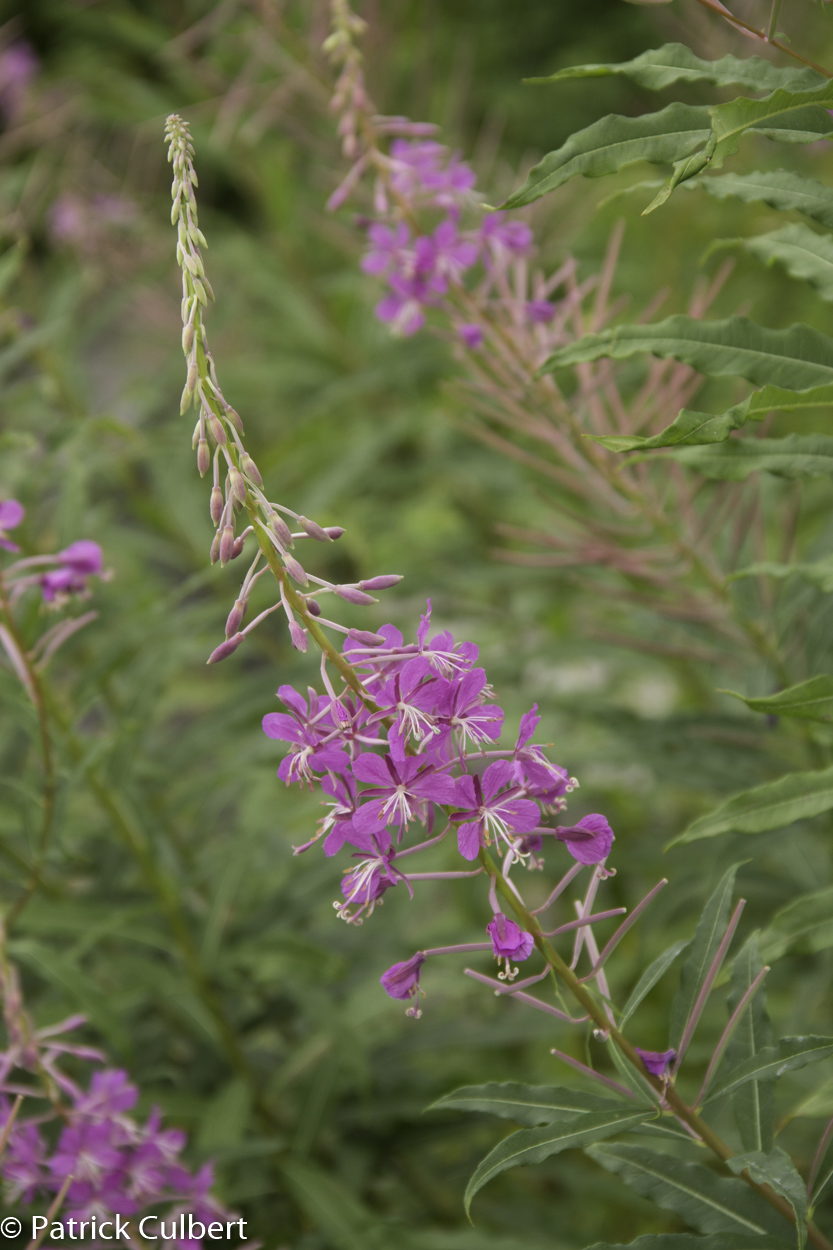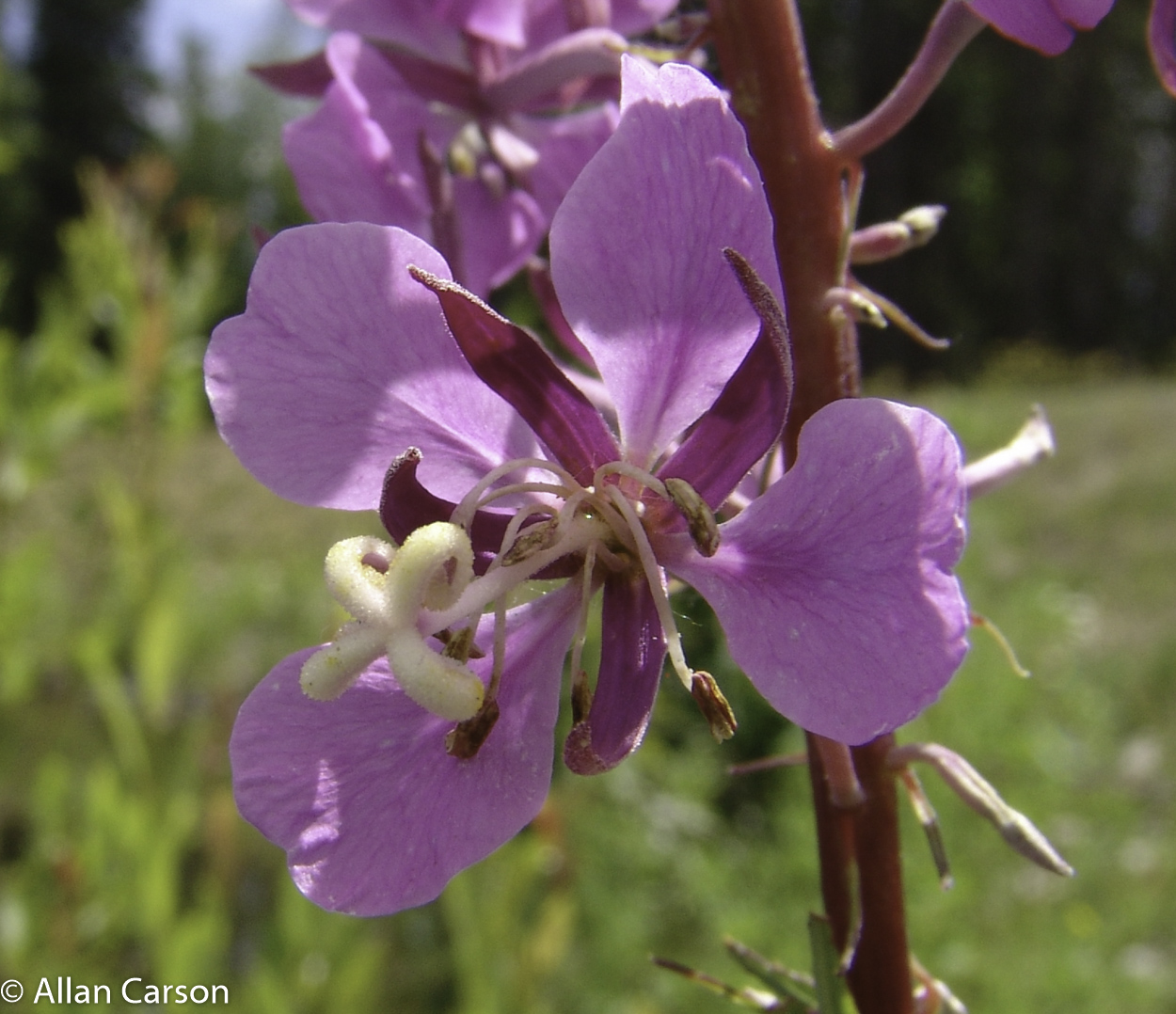Epilobium angustifolium – fireweed
Common Name
fireweed
Family
Onagraceae
Scientific Name
Epilobium angustifolium
Alternate Scientific Name
- Chamerion angustifolium
Soil Moisture Regime (SMR)
- Dry (D)
- Moderately Dry (MD)
- Medium (M)
- Wet (W)
Soil Nutrient Regime (SNR)
- Poor (P)
- Medium (M)
- Rich (R)
Video link
Douglas, G.W. et al (Editors). 1998-2002. Illustrated Flora of British Columbia, Volumes 1 to 8. B.C. Min. Environ., Lands and Parks, and B.C. Min. For., Victoria, B.C. Copyright Province of British Columbia. All rights reserved. Reproduced with permission of the Province of British Columbia.
General / Habitat
- A fast-growing herb
- Prefers disturbed areas, especially following forest fire (hence the common name). Also roadsides, clearcuts
- Common throughout our region at all elevations
Key Identifying Characteristics
- Form: Erect, up to 3 m tall at low elevations but typically 1 m in subalpine, reddish
stems - Leaves: Alternate, spirally arranged, lance-like, pale and distinctly veined below, entire
- Flowers: Pink, large, style with prominent four-lobed stigma, borne in a spike-like raceme
- Fruit: long capsules containing hundreds of seeds. Seeds are white, fluffy and well-adapted for wind dispersal
Lookalikes
- There are a number of other Epilobium species in our region but fireweed is generally easy to tell apart due to its size and numerous flowers
Interesting Characteristics
- Seeds can remain viable in the soil for many years and will opportunistically germinate following fire or clearcutting
- Used by aboriginal groups in our region, as well as others worldwide, as a poultice, tea, and for honey
- Seeds are very light (early successional, fugitive species)
External References
Sources
Douglas, G.W. et al (Editors). 1998-2002. Illustrated Flora of British Columbia, Volumes 1 to 8. B.C. Min. Environ., Lands and Parks, and B.C. Min. For., Victoria, B.C.
Pojar, J. and A. MacKinnon. 2014. Plants of Coastal British Columbia Including Washington, Oregon & Alaska. B.C. Ministry of Forestry and Lone Pine Publishing. Vancouver, B.C.

